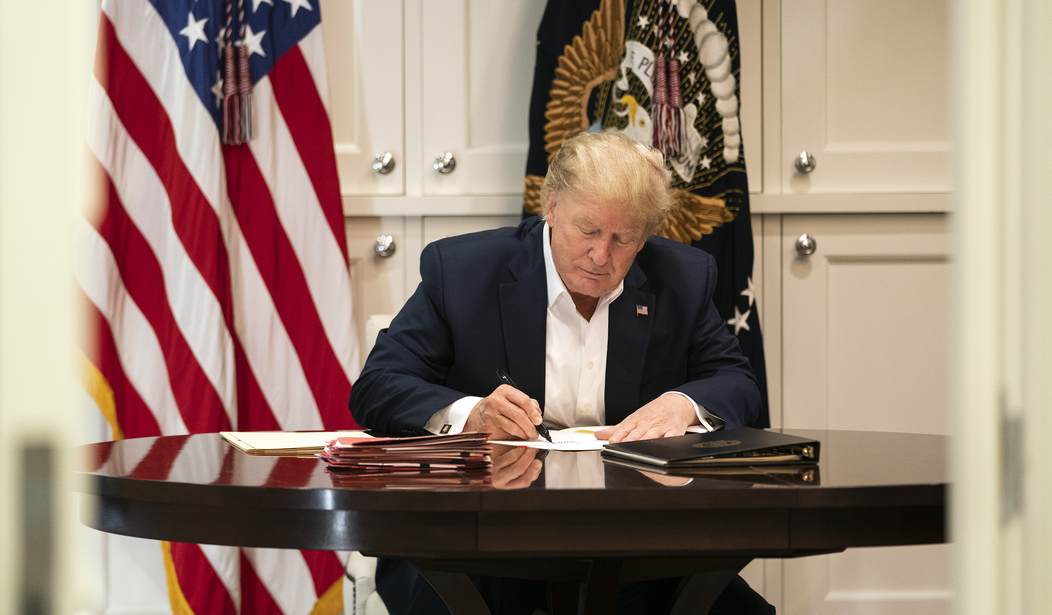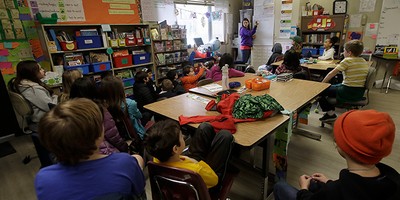With President Trump’s hospitalization and treatment for COVID-19, it’s time for a serious reality check.
The President lives in a bubble. Everyone who gets close to him gets checked for the CCP virus. Test positive and you’re persona non grata. This presidential bubble is functionally similar to security precautions at maximum security prisons. They work hard to avoid ever allowing drugs or weapons to enter the facility. Yet drugs are pervasive and weapons aren’t uncommon. In short, such measures don’t work, and the President’s illness demonstrates that they don’t work for diseases, either. Let’s break it down.
The Abbott BinaxNOW test gives an answer in fifteen minutes. It is reported to be 97.1% accurate for COVID-positive persons and 98.5% for negatives. This sounds really good. And, as medical tests go, it is. But this is where news outlets drop the ball. The real-world math goes like this.
For the first person tested, there’s only a 1.5% chance of a “false negative” result. This person could still be infected, but the chances are very small. When the second person is tested, the individual chance is still 1.5%. But what is the chance that two people will yield one false negative? Statisticians can give this answer in their sleep. It’s [1 - (98.5% x 98.5%)], or 2.98%. As we keep adding steps, we discover that the chance of an undetected COVID-positive individual slipping through reaches 50/50 at 47 tests.
Forty-seven? Yes, that’s the real number. More than 47 people enter the White House on any given day. As Slate notes, there’s a valid argument that this is a misuse of testing. But we’re not done. By time you reach 306 tests, there’s a 99% chance that you’ve missed an infected person. 99%.
This doesn’t mean the test is bad. It’s actually a very good test. But testing can’t be effectively used for screening. You need 100% reliability and specificity for screening, and no test is that good. When you have to deal with a lot of people, you will get exposed. You just can’t avoid it. It’s in the wild. More on that in a minute.
Recommended
The idea that Trump got the bug from Hope Hicks borders on stupidity. They became positive with a day or two of each other, meaning that they both were exposed at least a week (and maybe two) earlier. But that does not imply that they got the bug from the same source. It does not imply that Trump got the bug from not wearing a mask. Hicks is a compulsive mask wearer and got sick. And everyone at the debate tested negative.
How did he get infected? It’s almost certain that track-and-trace efforts will find some likely suspect, but it will never be proved. Further, it’s likely that the suspect will be someone who was never really sick, but maybe had a dry cough or two before his evening adult beverage in front of the “news” on the box. In short, we won’t find anything meaningful.
Before I move on, I have to note that the CDC, WHO, and Oxford Center for Evidence-Based Medicine have all found “no evidence” that masks reduce the transmission of disease. But this shouldn’t be a surprise. COVID-19 and H1N1 are both spread by aerosols. And masks don’t stop aerosols, they just redirect them. Further, by looking at the spread of COVID-19 and mask wearing around the world we find that there has been no benefit from mask wearing.
Meanwhile, the CDC continues to push hand washing and social distancing, methods tailored for droplet and contact-spread diseases. But “The U.S. Centers for Disease Control and Prevention (CDC) recommendations for social distancing of 6 feet and hand washing to reduce the spread of SARS-CoV-2 are based on studies of respiratory droplets carried out in the 1930s.”
Just to make life interesting, Spain and Brazil have both found COVID-19 in sewage samples from last November, putting the idea that the virus started in Wuhan in serious jeopardy. Now Dr. Tom Jefferson, an honorary senior research fellow at the Center for Evidence-Based Medicine of Oxford University suggests that there is evidence that it was pretty much everywhere in nature, waiting for some trigger to become a human pathogen. This means that restricting travel to isolate the US from the bug was a fool’s errand. It seemed like a good idea back then, but the virus had already been here for quite some time.
There’s a term for a virus that’s everywhere. It’s “in the wild.” It’s like mosquitoes. If you’re in Anchorage during prime season for the Alaskan Air Force, you’re going to get bitten. You have as much chance to avoid getting close to COVID-19 as you do trying to stop mosquitoes with a chain link fence. You can socially distance. You can wear masks, which even the WHO says don’t work. But I already told you that here, here, here, here, and here. And I’m not alone. Even the CDC said that masks don’t work back in May. Yet they keep recommending that we use them.
Can we protect high risk individuals? Maybe. But they still have to have food, see doctors, and so on. They will be exposed. But what we must not do is put them next to people who are already sick. We need to have a high index of suspicion when they show even mild symptoms.
We can’t use testing to screen groups. Masks have been shown to be worthless for anyone other than workers in special high risk areas. Social distancing is meaningless, because it addresses the wrong method of disease transmission. So what can the rest of us do that reduces risk, other than staying away from people who are actually sick?
The first thing is to avoid prolonged indoors exposure. Every supers-preader event has been indoors, where air conditioning takes that other guy’s infectious aerosols and adds them to his aerosols from five minutes ago, an hour ago and two hours ago. This creates a “smoke-filled room” that raises virus levels high enough to infect people. That doesn’t happen at Trump’s outdoor rallies and Supreme Court reveals.
If you must be indoors, then let the outdoors in. You can open windows or doors, or use an A/C system that mixes outdoor air with indoor air. Or you can use high intensity UV light (like sunlight!) in the A/C to kill the virus.
The only real question remaining is what happens after the virus bites you, because it will. And that answer is, at best, very uncertain. We know that between 50% and 60% of the population has “T-Cell Immunity.” This appears to be acquired by historical exposure to related viruses. If you are under age 60, you really don’t have much to worry about. But if you’re high risk, get to the doctor soonest. Let him worry about the latest literature on treatments.
Ted Noel MD posts on social media and YouTube as DoctorTed and @vidzette.

























Join the conversation as a VIP Member